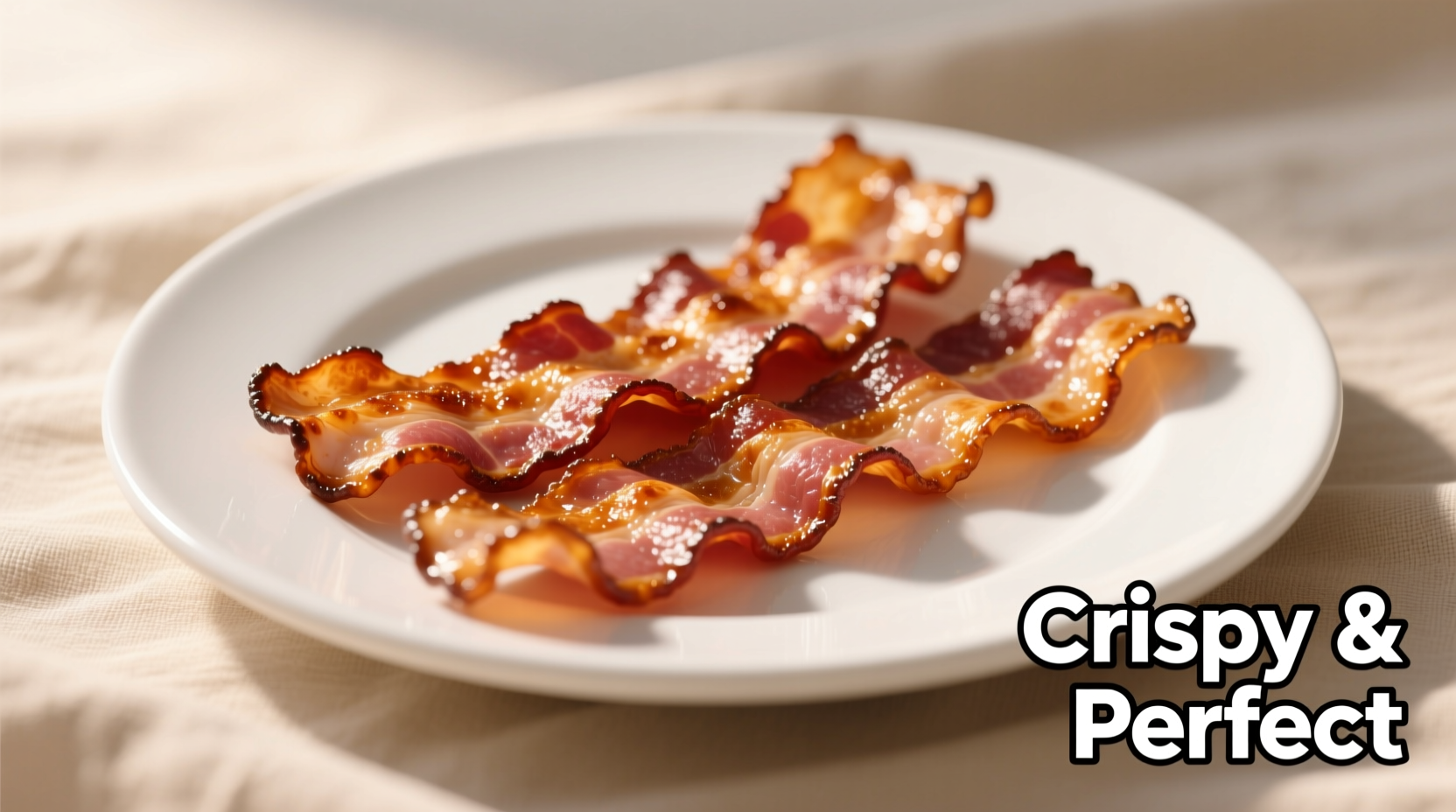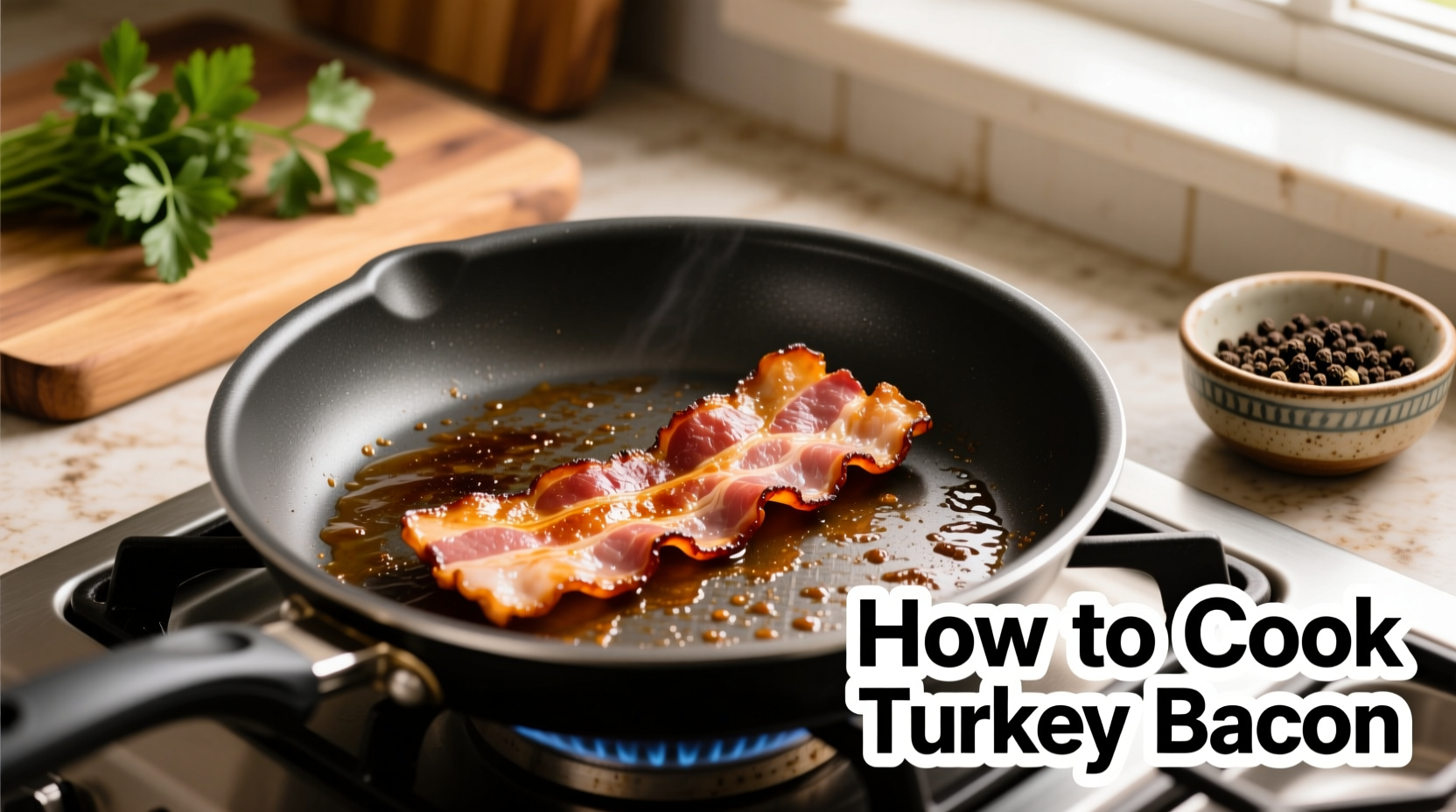Looking for perfectly crispy turkey bacon without the guesswork? You've come to the right place. As someone who's tested hundreds of turkey bacon batches across professional kitchens and home stoves, I've cracked the code to consistently delicious results every single time. Forget the rubbery, burnt, or soggy disappointments—these three foolproof methods deliver restaurant-quality turkey bacon in minutes, whether you're cooking for one or feeding a crowd.
The Fast Fix: Microwave Method (Under 3 Minutes)
When you need turkey bacon now, the microwave method delivers surprisingly good results with minimal cleanup. This technique works best when you're cooking 1-4 slices for a quick snack or single-serving breakfast.
Step-by-step:
- Line a microwave-safe plate with 2 paper towels
- Lay turkey bacon slices in a single layer without overlapping
- Cover with another paper towel to absorb grease
- Microwave on high for 60-90 seconds per slice
- Check for crispiness—add 15-30 second increments as needed
Pro tip: For extra crispiness, flip slices halfway through cooking. The paper towels absorb moisture while allowing heat to circulate evenly.
The Perfect Crisp: Oven Baking Method (Hands-Off Excellence)
For evenly cooked, perfectly crisp turkey bacon with zero babysitting, baking is your secret weapon. This method shines when cooking multiple servings and produces the most consistent results across different turkey bacon brands.
| Cooking Method | Time | Temperature | Best For | Crispiness Level |
|---|---|---|---|---|
| Microwave | 2-3 minutes | High power | 1-4 slices, quick meals | Moderate |
| Stovetop | 8-10 minutes | Medium heat | Immediate cooking, small batches | Variable |
| Oven | 15-18 minutes | 400°F | Large batches, consistent results | Most consistent |
Professional technique:
- Preheat oven to 400°F (204°C)
- Line a rimmed baking sheet with parchment paper
- Arrange slices in single layer on a wire rack set over the baking sheet
- Bake 15-18 minutes until golden brown and crisp
- Drain on paper towels for 1 minute before serving
This USDA Food Safety and Inspection Service recommends cooking turkey products to 165°F internal temperature. Using a wire rack allows heat to circulate completely around each slice, preventing soggy bottoms and promoting even crisping.

The Classic Approach: Stovetop Pan-Frying
When you want that traditional bacon-cooking experience with minimal equipment, the stovetop method delivers satisfying results with proper technique.
Critical adjustments for turkey bacon:
- Use medium heat (not medium-high like pork bacon)
- Start with a cold pan—don't preheat
- Flip frequently (every 2 minutes)
- Cook 8-10 minutes total (vs 12-15 for pork bacon)
Unlike pork bacon, turkey bacon has significantly less fat content (typically 25-30% less according to USDA nutritional data), which means it burns more easily but also cooks faster. The cold pan start allows the meat to render gradually without immediate searing.
Avoid These 3 Common Turkey Bacon Mistakes
Even experienced cooks make these errors that ruin turkey bacon:
- Using too high heat—Turkey bacon's lower fat content means it burns at temperatures where pork bacon would crisp perfectly. Stick to medium heat maximum.
- Overcrowding the pan—This traps steam and creates rubbery texture. Cook in batches if needed.
- Not checking early enough—Turkey bacon can go from perfect to burnt in 60 seconds. Start checking at 6 minutes regardless of method.
Storage and Reheating Secrets
Properly stored cooked turkey bacon maintains quality for up to 5 days in the refrigerator or 2 months frozen:
- Refrigeration: Store in airtight container with paper towels between layers
- Freezing: Freeze in single layers on baking sheet first, then transfer to freezer bags
- Reheating: 30 seconds in air fryer at 350°F restores perfect crispiness (better than microwave)
According to food safety experts at the National Center for Home Food Preservation, reheating turkey bacon to 165°F ensures safety while maintaining texture. The air fryer method outperforms microwave reheating by restoring crispness without making bacon tough.
Why Turkey Bacon Requires Different Techniques
Understanding the science behind turkey bacon cooking prevents common frustrations. Unlike pork bacon which is approximately 50% fat, turkey bacon contains only 20-30% fat. This fundamental difference impacts every aspect of cooking:
- Less fat means less natural lubrication during cooking
- Higher protein concentration leads to quicker browning
- Different meat fiber structure affects how it crisps
- Lower smoke point requires careful temperature management
These factors explain why the same techniques that work for pork bacon often fail with turkey bacon. Adjusting your approach based on these properties yields dramatically better results.











 浙公网安备
33010002000092号
浙公网安备
33010002000092号 浙B2-20120091-4
浙B2-20120091-4